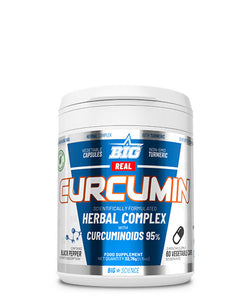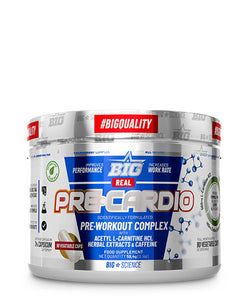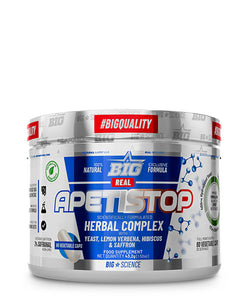
Curcumin: gold powder
Sergio Guerrero
INTRODUCTION
In this new blog post we will detail the effects of curcumin , one of the active compounds in turmeric. Ayurvedic medicine, a traditional Indian system of treatment, recommends turmeric for a variety of health conditions. These include chronic pain and inflammation. Western medicine has begun to study turmeric as a pain reliever and healing agent.
Turmeric is a herbaceous plant of the Zingiberaceae family native to southwest India that has long been recognized for its medicinal properties.
Curcumin helps in the management of oxidative and inflammatory conditions, metabolic syndrome, arthritis, anxiety and hyperlipidemia . It may also aid in the management of exercise-induced muscle inflammation and soreness, thereby improving recovery and performance in active people . Additionally , a relatively low dose of the complex may provide health benefits to people who do not have diagnosed health problems . Most of these benefits can be attributed to its antioxidant and anti-inflammatory effects (Fig. 1).

- Figure 1: Some benefits of curcumin on human health.
PHARMACOLOGY AND MOLECULAR STRUCTURE.
In the dried rhizome, abundant coloring materials (3-5%) called curcuminoids are found, of which the main one is curcumin , isolated in the 19th century.
It also contains monodesmethoxycurcumin and bisdesmethoxycurcumin; essential oil (20-70 mg/kg) rich in terpenic carbides and turmerones; 40-45% polysaccharides, mainly arabinogalactans, minerals (3-5%), carotenes, vitamin C and water-soluble peptides.
Turmeric has numerous molecular components, each of which possesses a variety of biological activities. 326 biological activities of turmeric are identified. Three of the widely researched components in turmeric are the golden-colored curcuminoid alkaloids, namely curcumin, bisdemethoxycurcumin, and demethoxycurcumin.
Curcumin acts as an oxygen species scavenger, and inhibits lipid peroxidation and DNA damage. In addition, it mediates anti-inflammatory and anticancer actions through the modulation of several signaling molecules. Suppresses the biosynthesis of prostaglandins and the activity and expression of the enzyme cyclooxygenase (COX)-2*. There are many more, but for the best understanding possible we will focus on these last two.
*COX-2: Enzyme that accelerates the formation of substances that cause inflammation and pain.
*Prostaglandins: are a set of lipid substances derived from fatty acids that intervene in the inflammatory response among one of their most characteristic functions.
Regarding metabolism, curcumin initially undergoes rapid intestinal metabolism to form curcumin glucuronide and curcumin sulfate. Curcumin may also undergo a second intensive metabolism in the liver, where the major metabolites were glucuronides of tetrahydrocurcumin and hexahydrocurcumin, with dihydroferulic acid and traces of ferulic acid as additional metabolites. Certain metabolites of curcumin, such as tetrahydrocurcumin, retain anti-inflammatory and antioxidant properties.
Ingesting curcumin alone does not generate the associated health benefits due to its poor bioavailability, which appears to be mainly due to poor absorption, rapid metabolism, and rapid elimination that occurs primarily through feces and to a lesser extent in urine.

- Figure 2: Metabolites derived from curcumin
MAIN USES, DOSAGE AND SAFETY.
ANTIOXIDANT
Between pH values 3-7 it acts as an extraordinarily potent proton donor and above pH 8, it acts mainly as an electron donor, a mechanism more suitable for its antioxidant properties. 60% of orally administered curcumin is absorbed, but most is metabolized to glucuronides and sulfate compounds that are excreted in the urine. Coadministration of curcumin with piperine, a compound found among other vegetables in pepper ( Piper nigrum L. ), increases the bioavailability of curcumin after oral dosing, presumably due to inhibition of glucuronidation.
Curcumin has been shown to improve systemic markers of oxidative stress, Sahebkar,A. et al., 2015. In the same review of randomized control data, the efficacy of supplementation with purified curcuminoids on oxidative stress parameters was observed, and indicated a significant effect of curcuminoid supplementation on all investigated oxidative stress parameters. . It should be noted that all of the studies included in the meta-analysis used some type of formulation to overcome bioavailability challenges, and four of the six used piperine.
ANTI-INFLAMMATORY
Tumor necrosis factor α (TNF-α) is an important mediator of inflammation in most diseases, and this effect is regulated by the activation of a transcription factor, nuclear factor (NF)-κB. Curcumin has been shown to block NF-κB activation increased by several different inflammatory stimuli. Curcumin has also been shown to suppress inflammation through many different mechanisms beyond the scope of this review, supporting its mechanism of action as a potential anti-inflammatory agent . (Fig.3)

- Figure 3: Curcumin blocks the production of inflammatory proteins.
ARTHRITIS
Several studies have demonstrated the anti-arthritic effects of curcumin in humans with osteoarthritis and rheumatoid arthritis . An example of this is the randomized, double-blind, placebo-controlled trial carried out by Panahi, Y et al. in 2014, where 40 subjects with mild to moderate knee osteoarthritis were recruited and were randomly assigned to receive curcumin (500 mg/day in three divided doses; n = 19) with 5 mg of piperine added to each. Dose of 500 mg or equivalent placebo (n= 21) for six weeks. There were significantly greater reductions in visual analog scale (VAS), Western Ontario and McMaster Universities Osteoarthritis Index (WOMAC) scores, and Lequesne Pain Functional Index (LPFI) scores in the treatment group compared with the placebo group. When comparing the WOMAC subscales, there were significant improvements in the pain and physical function scores but not in the stiffness score.
The Arthritis Foundation cites several studies in which turmeric has reduced inflammation. This anti-inflammatory ability could reduce the aggravation that people with arthritis feel in their joints. The foundation suggests taking 400 to 600 milligrams (mg) turmeric capsules up to three times a day to relieve inflammation.
Surely, almost all of us are familiar with non-steroidal anti-inflammatory drugs (NSAIDs) such as ibuprofen. Curcumin is used as an equally effective alternative without the side effects that NSAIDs do offer . This is shown in a systematic review and meta-analysis of randomized clinical trials published in 2016 by Daily, James W. et al., where it is proposed that “8 – 12 weeks of treatment with standardized turmeric extracts (typically 1000 mg/day of curcumin) may reduce arthritis symptoms (mainly symptoms related to pain and inflammation) and result in similar improvements in symptoms as ibuprofen and diclofenac sodium. Therefore, turmeric and curcumin extracts can be recommended to relieve the symptoms of arthritis, especially osteoarthritis. ”
METABOLIC SYNDROME
Metabolic syndrome is a group of pathologies that occur at the same time, including insulin resistance, hyperglycemia, hypertension, low high-density lipoprotein cholesterol (HDL-C), high low-density lipoprotein cholesterol (LDL-C). , high levels of triglycerides and obesity.
Curcumin has been shown to attenuate several aspects of metabolic syndrome by improving insulin sensitivity, suppressing adipogenesis, and reducing elevated blood pressure, inflammation, and oxidative stress . Furthermore, there is evidence that curcuminoids modulate the expression of genes and the activity of enzymes involved in lipoprotein metabolism leading to a reduction in plasma triglycerides and cholesterol, and elevating HDL-C concentrations.
Both overweight and obesity are related to chronic low-grade inflammation; Although the exact mechanisms are unclear, it is known that proinflammatory cytokines are released. These cytokines are believed to be at the heart of the complications associated with diabetes and cardiovascular disease. Therefore, it is important to address inflammation.
In a randomized, double-blind, placebo-controlled trial with a parallel group design, published in 2014 by Kuptniratsaiku; V. et al., 117 subjects with metabolic syndrome received 1 g of curcumin plus 10 mg of piperine to increase absorption or a placebo plus 10 mg of piperine for eight weeks. The authors concluded that short-term supplementation with a combination of curcuminoid and piperine significantly improves oxidative and inflammatory status in patients with metabolic syndrome.
HEALTHY PEOPLE
Most human curcumin studies have been conducted in populations with existing health problems. Perhaps this is because studies in healthy people can be challenging in that the benefits may not be as immediate and measurable if biomarkers are normal at the start of the study.
A study conducted by DiSilvestro, RA and collaborators in 2012, recruiting healthy adults between 40 and 60 years old, used a dose of 80 mg/day of a lipid form of curcumin. Subjects received curcumin or a placebo for four weeks. The treatment was 400 mg of powder per day containing 80 mg of curcumin. Blood and saliva samples were taken before and after four weeks. Curcumin significantly reduced triglyceride levels, but not total, LDL, or HDL cholesterol levels. There was a significant increase in nitrous oxide (NO) and soluble intercellular adhesion molecule 1 (sICAM), a molecule linked to atherosclerosis. Inflammation-related neutrophil function increased, in addition, there was a decrease in salivary amylase activity, which may be a marker of stress, and an increase in salivary radical scavenging capabilities. There was also a decrease in amyloid beta plaque, a marker of brain aging, and in plasma alanine amino transferase activities, a marker of liver damage. This indicates that a relatively low dose of curcumin may provide health benefits to people who do not have diagnosed health problems.
More recently, in a study by Delacroix et al., in 2017, they reported that 2 g of curcumin and 20 g of piperine can help offset some of the physiological markers of muscle soreness after intense training in elite rugby players.
SIDE EFFECTS
Curcumin has a long-established safety record. For example, according to the reports of JECFA (Joint Committee of Experts on Food Additives of the United Nations and the World Health Organization) and EFSA (European Food Safety Authority), the value of the permitted daily intake (ADI) of Curcumin is 0 to 3 mg/kg body weight. Even so, and depending on the person, certain side effects may appear, although they usually have mild symptoms.
BIOAVAILABILITY AND ABSORPTION
A fairly recurring theme, especially brought to the fore by supplementation brands, is offering the most bioavailable curcumin on the market.
The reality of all this is that piperine, phospholipids, other curcuminoids and added essential oils, nanoparticles, etc., all and absolutely all of them have proven effective. Simply with certain patents , whose current evidence is more limited than in its main competitor and the one that has the most support for now, which is piperine and its patent Bioperine, fewer doses would be needed to achieve the same effect . Absorption and bioavailability are two totally different things .
To make matters worse, there is no well-designed study where one patent is compared against another. For those of you who come to cite me, the study by Stohs et Al. published in 2020 is poorly designed, and they also cite it in the study itself.
“A major issue is the fact that, with few exceptions, most pharmacokinetic studies have hydrolyzed plasma samples prior to analysis, resulting in the determination of total and not just free curcumin. Enzymatic hydrolyzing of plasma with glucuronidase/sulfatase to release curcumin from its conjugates, instead of measuring free curcumin in non-hydrolyzed plasma samples, results in the determination of total curcumin and not free bioactive curcumin. Therefore, reporting total curcumin from hydrolyzed plasma samples provides highly exaggerated and misleading results .” Additionally, the study was funded by Boston Biopharm, owner of the Biocurc patent.
In short, they all work, and unless megadoses were needed, I don't see the logic of using an ultra-innovative patent, and they tend to be more expensive. As always, context.
CONCLUSIONS
REFERENCES
- Ahmad, RS, Hussain, MB, Sultan, MT, Arshad, MS, Waheed, M., Shariati, MA, Plygun, S., & Hashempur, MH (2020). Biochemistry, Safety, Pharmacological Activities, and Clinical Applications of Turmeric: A Mechanistic Review. Evidence-based complementary and alternative medicine : eCAM, 2020, 7656919. https://doi.org/10.1155/2020/7656919
- Akuri, MC, Barion, MR, & Guiguer, SMB É. L. (2017). Alternative Therapeutic Approach for Cartilage Repair. In AR Zorzi, & J. a. de Miranda (Eds.), Cartilage Repair and Regeneration. IntechOpen. https://doi.org/10.5772/intechopen.72478
- Daily JW, Yang M, Park S. Efficacy of Turmeric Extracts and Curcumin for Alleviating the Symptoms of Joint Arthritis: A Systematic Review and Meta-Analysis of Randomized Clinical Trials. J Med Food. 2016 Aug;19(8):717-29. doi: 10.1089/jmf.2016.3705. PMID: 27533649; PMCID: PMC5003001.
- Delecroix B, Abaïdia AE, Leduc C, Dawson B, Dupont G. Curcumin and Piperine Supplementation and Recovery Following Exercise Induced Muscle Damage: A Randomized Controlled Trial. J Sports Sci Med. 2017 Mar 1;16(1):147-153. PMID: 28344463; PMCID: PMC5358025.
- EMA-HMPC. Community herbal monograph on Curcuma longa L., rhizoma. London: EMA. Doc. Ref.: EMA/HMPC/456845/2008. Adopted on: 12/11/2009
- Hewlings, S.J., & Kalman, D.S. (2017). Curcumin: A Review of Its Effects on Human Health. Foods (Basel, Switzerland), 6(10), 92. https://doi.org/10.3390/foods6100092
- https://www.arthritis.org/health-wellness/treatment/complementary-therapies/supplements-and-vitamins/supplement-and-herb-guide-for-arthritis-symptoms
- Kuptniratsaikul V, Dajpratham P, Taechaarpornkul W, Buntragulpoontawee M, Lukkanapichonchut P, Chootip C, Saengsuwan J, Tantayakom K, Laongpech S. Efficacy and safety of Curcuma domestica extracts compared with ibuprofen in patients with knee osteoarthritis: a multicenter study. Clin Interv Aging. 2014 Mar 20;9:451-8. doi: 10.2147/CIA.S58535. PMID: 24672232; PMCID: PMC3964021.
- Panahi Y, Rahimnia AR, Sharafi M, Alishiri G, Saburi A, Sahebkar A. Curcuminoid treatment for knee osteoarthritis: a randomized double-blind placebo-controlled trial. Phytother Res. 2014 Nov;28(11):1625-31. doi:10.1002/ptr.5174. Epub 2014 May 22. PMID: 24853120.
- Sahebkar A., Serbanc MC, Ursoniuc S., Banach M. Effect of curcuminoids on oxidative stress: A systematic review and meta-analysis of randomized controlled trials. J. Funct. Foods. 2015;18:898–909. doi: 10.1016/j.jff.2015.01.005.
- Stohs SJ, Chen O, Ray SD, Ji J, Bucci LR, Preuss HG. Highly Bioavailable Forms of Curcumin and Promising Avenues for Curcumin-Based Research and Application: A Review. Molecules. 2020 Mar 19;25(6):1397. doi: 10.3390/molecules25061397. PMID: 32204372; PMCID: PMC7144558.




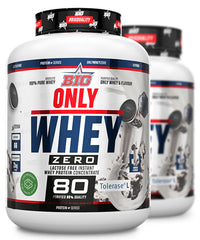
![CREABIG [Creapure®]](http://bigsupps.site/cdn/shop/products/producto_BIG_creabig_creapure_250g_0noflavour_500x600_8c48a126-a2a2-46a5-9bbd-8763ab82d768_200x.jpg?v=1757315967)
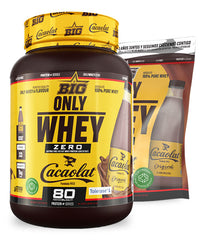
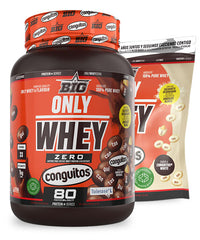
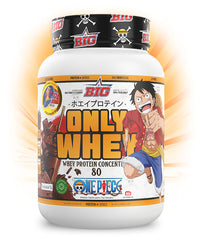
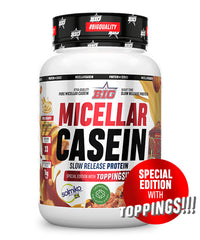
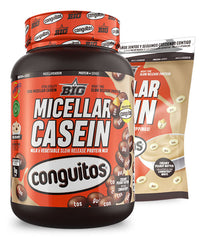
![CFM ISO ZERO [saco]](http://bigsupps.site/cdn/shop/files/producto_cfm_doypack_0noflavour_500x600a_200x.jpg?v=1750981452)
![CLEAR ISO ZERO [750g]](http://bigsupps.site/cdn/shop/files/producto_BIG_clearprotein_icepop_0noflavour_500x600a_200x.jpg?v=1757074297)
![CREABIG FIESTA® KOJAK® flavor - [250g]](http://bigsupps.site/cdn/shop/files/producto_BIG_creabig_kojak_0noflavour_500x600a_200x.jpg?v=1763548822)
